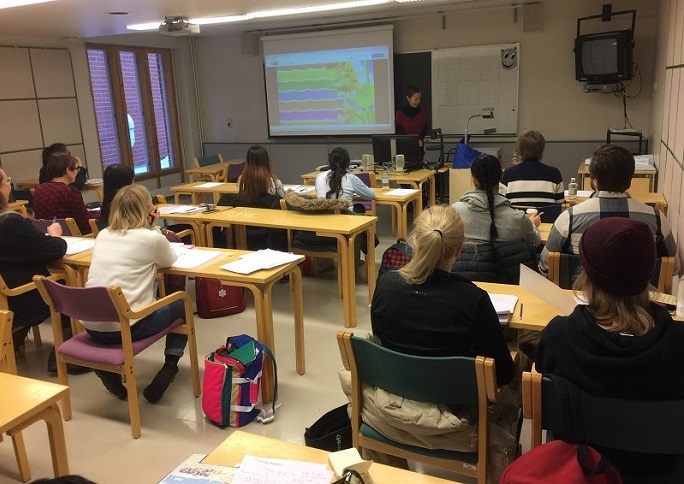Finns of all ages like vocational education
Published : 09 Sep 2020, 00:18
The number of young people in Finland who choose vocational education and training is above average, according to a report of the Organisation for Economic Co-operation and Development (OECD) published on Tuesday.
The OECD published its ‘Education at a Glance’, an annual publication of indicators used for comparing education systems. This year, ‘Education at a Glance’ includes a focus on vocational education and training, said a government press release.
Vocational education and training is popular in Finland and attracts a wide range of people of different ages to study.
By international standards, vocational education and training is also an internationally attractive option among young people in Finland.
Both young people who have completed comprehensive school and are studying for their first qualification as well as adults who wish to update their skills and develop their competence to meet the needs of working life enrol for vocational upper secondary education.
In Finland, 72% of all secondary school students (ISCED 3) are enrolled for vocational education and training, whereas in OECD countries the corresponding figure is 42%.
The high figure in Finland is explained by the number of adult students. In many other countries, vocational education and training effectively involves training young people for the job market, which means that the average age of students is naturally low.
Technology is by far the largest field of study in vocational education and training. On an average, 33% of students in upper secondary vocational education and training in OECD countries graduate from the field of technology.
It is the most popular field of study in Finland, too. However, its share is clearly smaller (24%) than the OECD average, and the share of those studying for a qualification in healthcare and social welfare is almost the same (22%).
Most students in upper secondary vocational education and training (55%) in both OECD and EU countries are males. In Finland, the number of males and females in vocational education and training is about the same when all students are included in the comparison, not just the age group of those who have completed comprehensive school.
In OECD countries, on an average, only 13% of those who have completed a qualification in technology are females. Correspondingly, females are over-represented among those who have completed a qualification in the healthcare and welfare sectors. Females account for an average of 81% in these sectors.
The international reference figure for early childhood education and care (ECEC) that has attracted the most visibility in Finland is the enrolment rate. While raising the enrolment rate in early childhood education and care has been an educational policy objective for several years in Finland, it remains below the international average for children aged between three and five. In Finland, 82% of children in this age group are enrolled in ECEC, compared with the OECD average of 88%.
While the ECEC enrolment rate in Finland has increased since the early 2000s, the rate of growth in other OECD countries has been roughly equally fast.
In the context of higher education, the indicator that is followed the most in the ‘Education at a Glance’ publication is the percentage of tertiary-educated people in different countries.
The OECD average is rising, reaching 45% in 2019 among young adults aged between 25 and 34. The percentage of tertiary-educated young adults in Finland aged between 25 and 34 has also been rising relative to 2009, but the rate of growth has not been as rapid as in OECD countries on an average.
In 2019, 42% of those aged between 25 and 34 had completed tertiary education in Finland.


